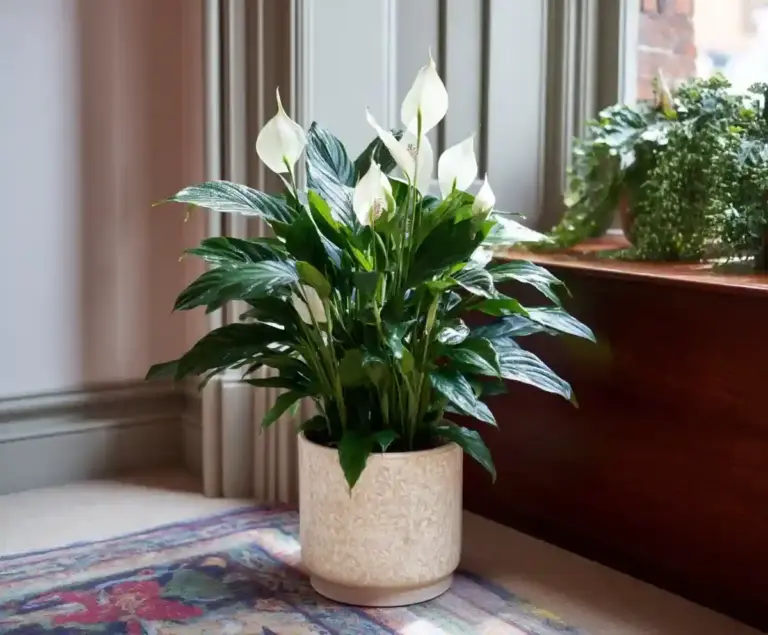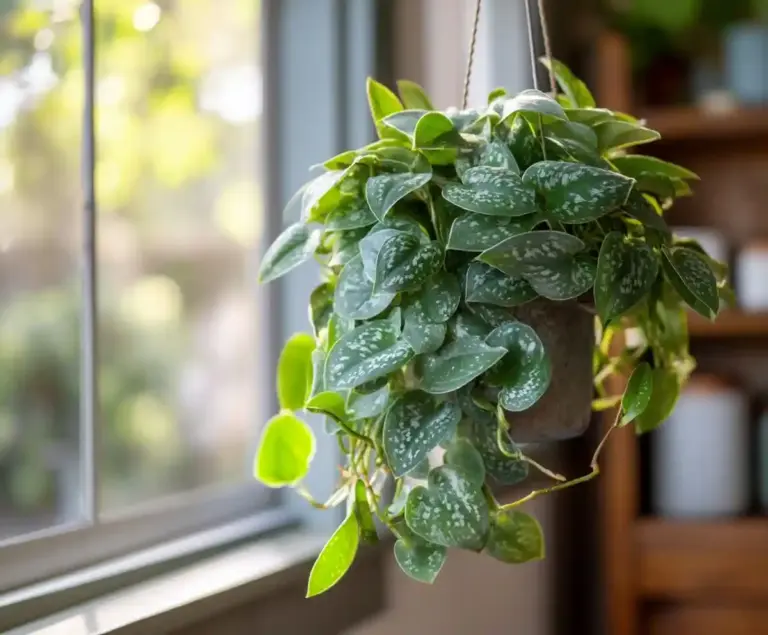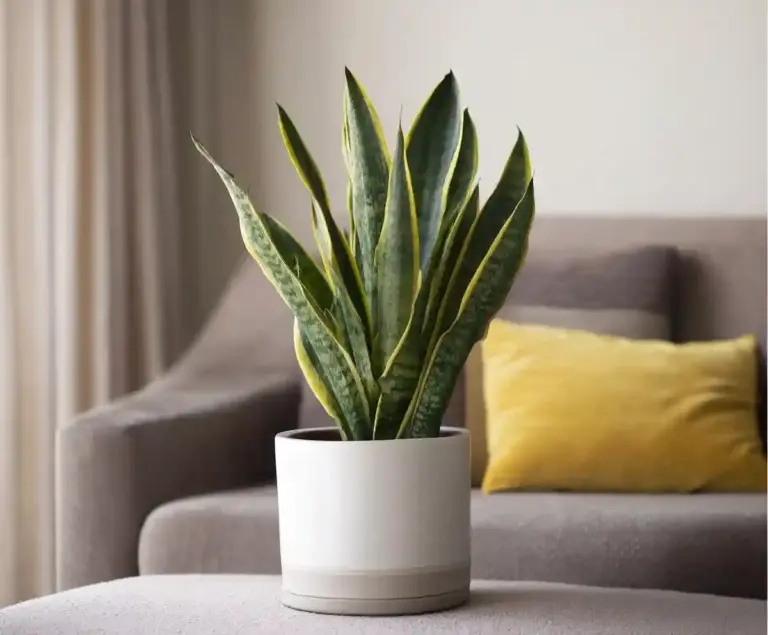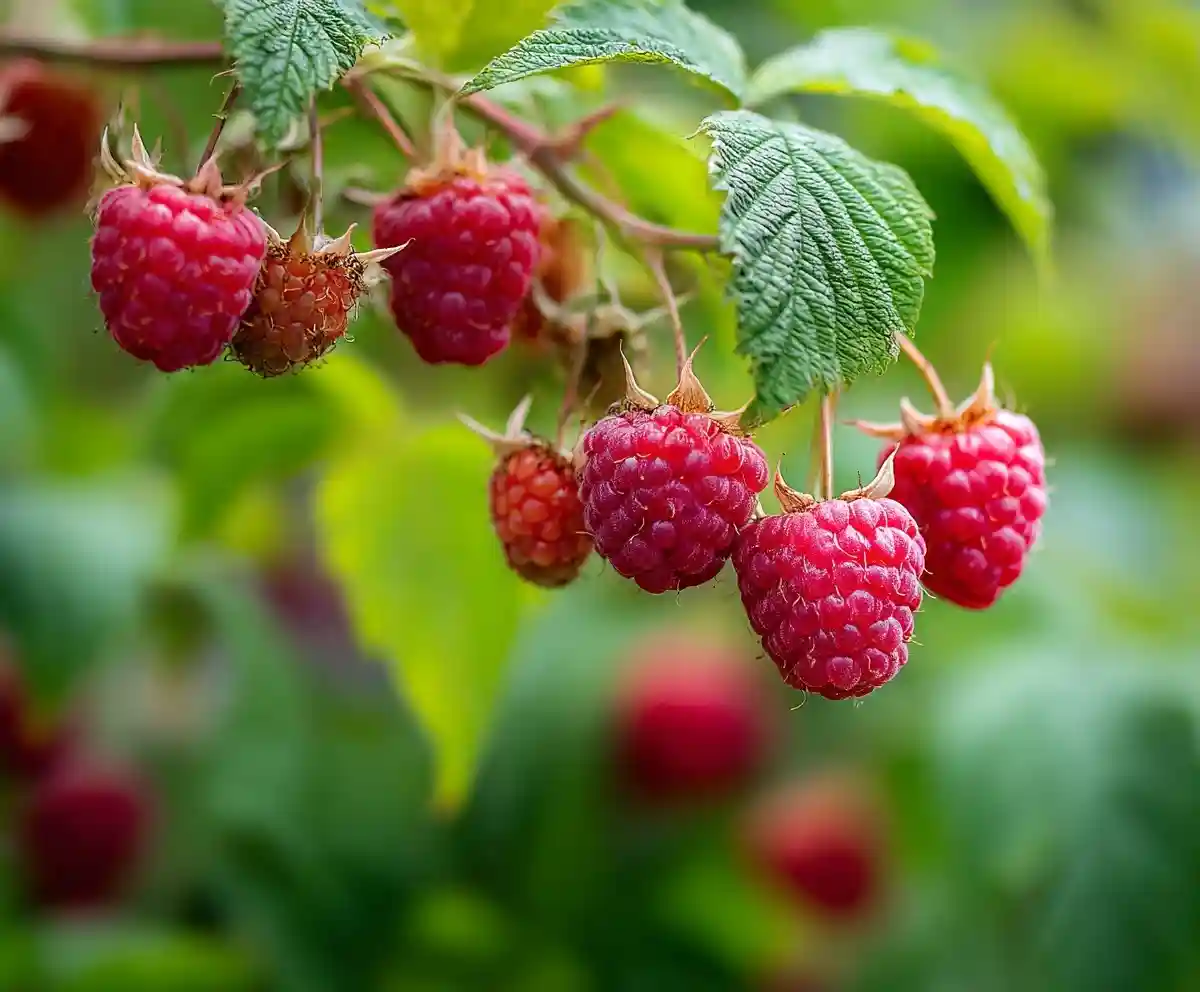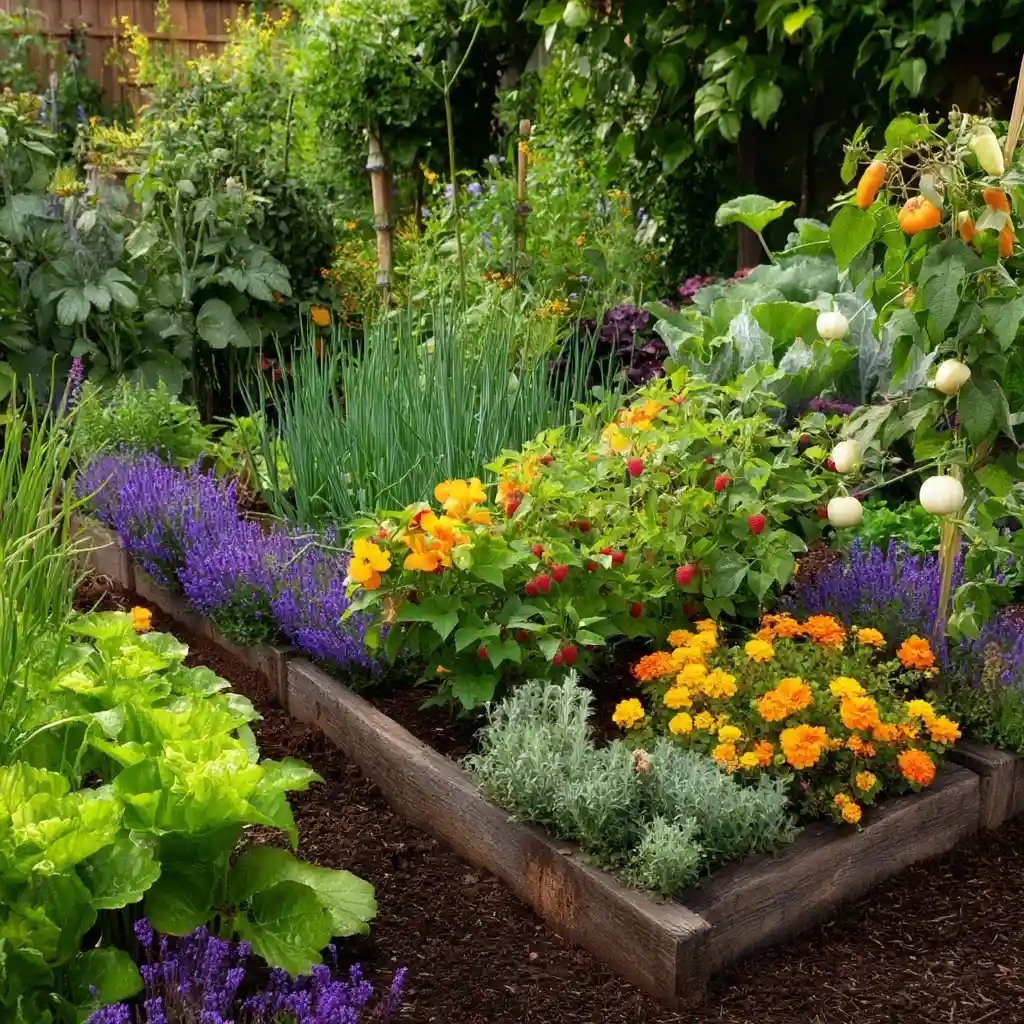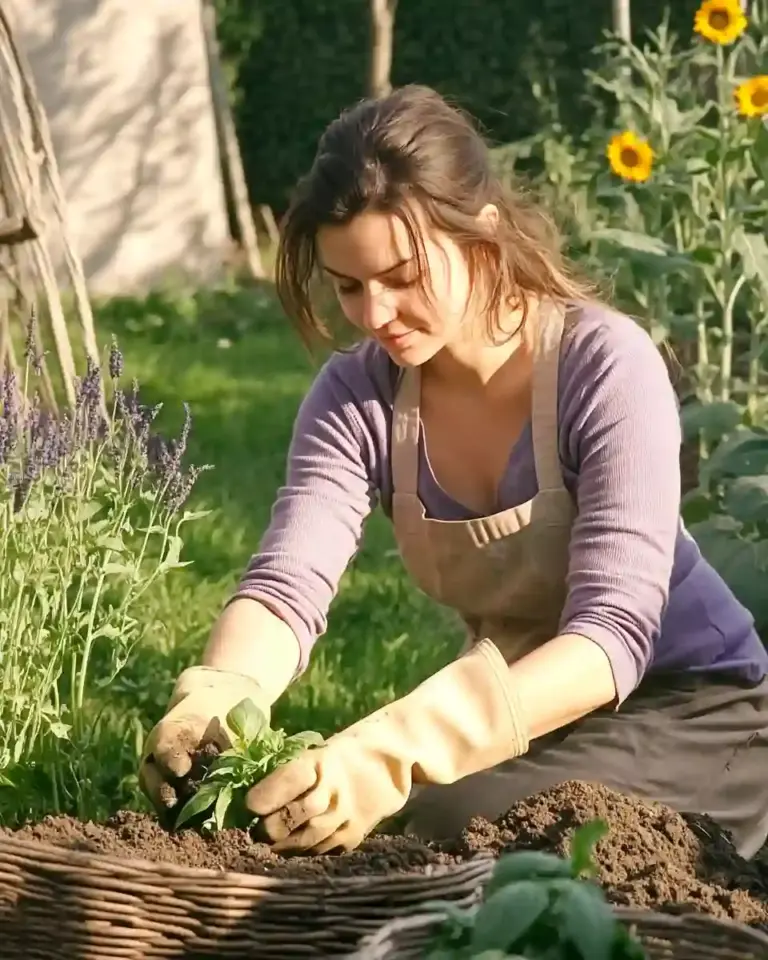Raspberry companion plants are the secret to healthier bushes and a bigger harvest. Choosing the right neighbors for your raspberry patch can boost pollination, repel pests, and enrich the soil naturally. While raspberries thrive in sunny, well-drained soil, they often need extra help to stay strong and productive season after season. Planting the right companions nearby can create a balanced ecosystem in your garden—one that supports growth, reduces disease risks, and attracts the pollinators raspberries love. In this guide, you’ll find the best plants to grow alongside your raspberries, the ones to avoid, and simple practices to keep your canes thriving year after year.
Table of Contents
11 Good Companion Plants for Raspberries
Companion planting works best when you match raspberries with plants that share similar growing needs and offer natural benefits. The following raspberry companion plants improve pollination, protect against pests, and strengthen soil health.
Garlic
Garlic makes one of the best raspberry companion plants. Its strong scent repels Japanese beetles, which can damage leaves and fruit. Tucking a few garlic cloves around your raspberry canes helps keep these pests away without chemicals.
Leeks, Onions & Chives
All members of the allium family, these plants share garlic’s pest-repelling power. They deter harmful insects and even browsing deer. Chives also attract pollinators, giving raspberries an extra boost during flowering.
Marigolds
Bright marigolds aren’t just for color. Their roots release compounds that suppress nematodes, microscopic worms that harm raspberry roots. Planting marigolds along the edges of your patch helps protect soil health.
Lavender
Lavender draws in bees and butterflies, two of the best pollinators for raspberries. Its fragrant flowers also provide a protective barrier against moths and fleas. Adding lavender creates both beauty and function in the garden.
Nasturtiums
These trailing flowers bring in beneficial pollinators while also repelling pests like aphids, squash bugs, and whiteflies. Nasturtiums act as a natural “trap crop,” drawing harmful insects away from tender raspberry growth.
Yarrow
Yarrow is a hardy perennial that repels harlequin beetles, a common pest that can damage raspberry leaves. Its clusters of small flowers also attract pollinators and beneficial insects such as ladybugs, which feed on aphids.
Chamomile
Chamomile brings subtle but important benefits as a raspberry companion plant. Its blossoms attract bees, while its roots release natural compounds that can improve the flavor and resilience of neighboring plants.
Mint
Mint repels aphids, one of the most persistent threats to raspberry canes. While effective, mint spreads aggressively, so it’s best planted in containers nearby rather than directly in the ground.
Turnips
Turnips serve as a decoy crop, attracting harlequin beetles away from raspberries. By sacrificing a few turnip leaves, you protect your raspberry patch from direct pest damage.
Spring Cover Crops
Planting cover crops such as buckwheat, rye, millet, or oats in early spring enriches the soil and helps control weeds. As these crops grow, they add organic matter, then can be tilled back into the soil before they set seed. This practice boosts soil fertility and prepares the ground for stronger raspberry growth.
Late-Summer Cover Crop
After raspberry harvest, sowing spring oats as a late-summer cover crop helps protect your plants. The oats absorb excess nutrients and moisture, reduce erosion, and smother weeds. They also support raspberries in hardening off before winter, giving your canes a healthier start the following season.
What Not to Plant Near Raspberries
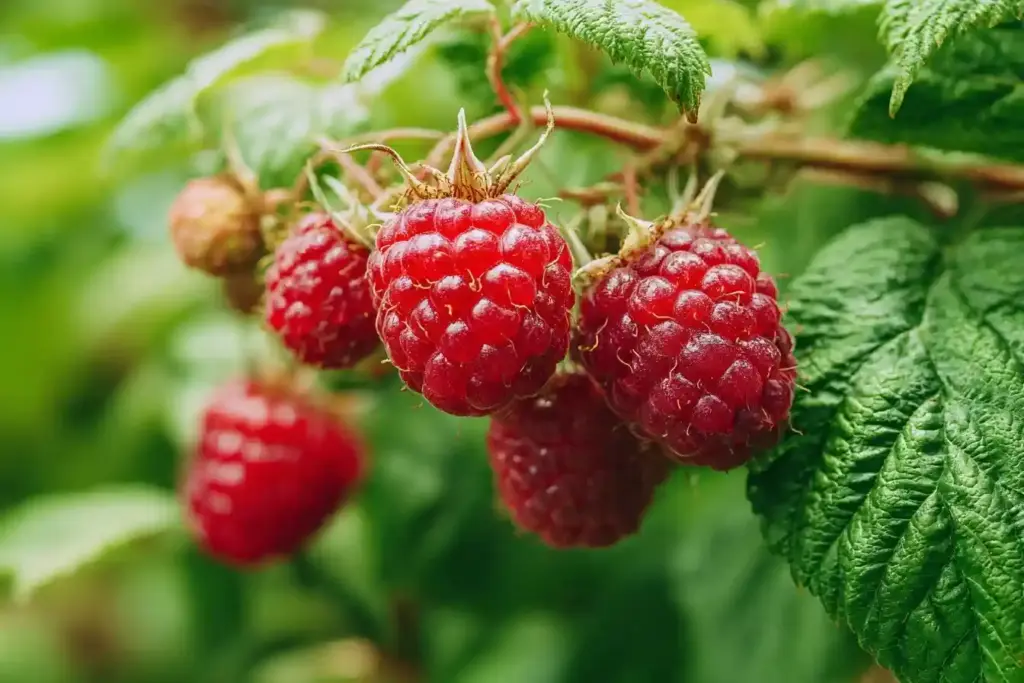
Not every garden neighbor benefits raspberries. Some plants can spread harmful fungi, carry soil-borne diseases, or simply demand conditions that conflict with raspberry needs. Avoid planting the following near your canes.
Tomatoes
Tomatoes belong to the nightshade family and can spread verticillium wilt, a disease that severely weakens raspberries. If tomatoes were grown in the same soil, wait at least four years before planting raspberries there.
Blueberries
Although both are fruiting shrubs, blueberries need highly acidic soil, while raspberries thrive in soil that is only mildly acidic. Growing them together means one crop will struggle.
Potatoes
Like tomatoes, potatoes carry the risk of transmitting verticillium wilt to raspberries. Keep them in separate areas of the garden to protect both crops.
Peppers
Another nightshade family member, peppers can harbor soil diseases harmful to raspberries. It’s best to rotate peppers and raspberries in different locations at least every four years.
Strawberries
Strawberries often host root-rotting diseases that also attack raspberries. Soil that has supported strawberries for several years can harbor lingering pathogens, making it unsafe for raspberry canes.
Eggplant
Eggplant poses the same threat as other nightshades, spreading verticillium wilt. Keep eggplants and raspberries well apart to avoid cross-contamination.
Wild and Cultivated Raspberries
Wild raspberry plants can carry viruses that infect cultivated varieties. Remove wild raspberries within about 600 feet of your garden to reduce the risk of disease spread.
Boysenberries, Blackberries & Gooseberries
These close relatives compete with raspberries for nutrients and often carry soil-borne fungal diseases. Keeping them separate helps prevent shared infections that could wipe out your berry harvest.
Gardening Best Practices
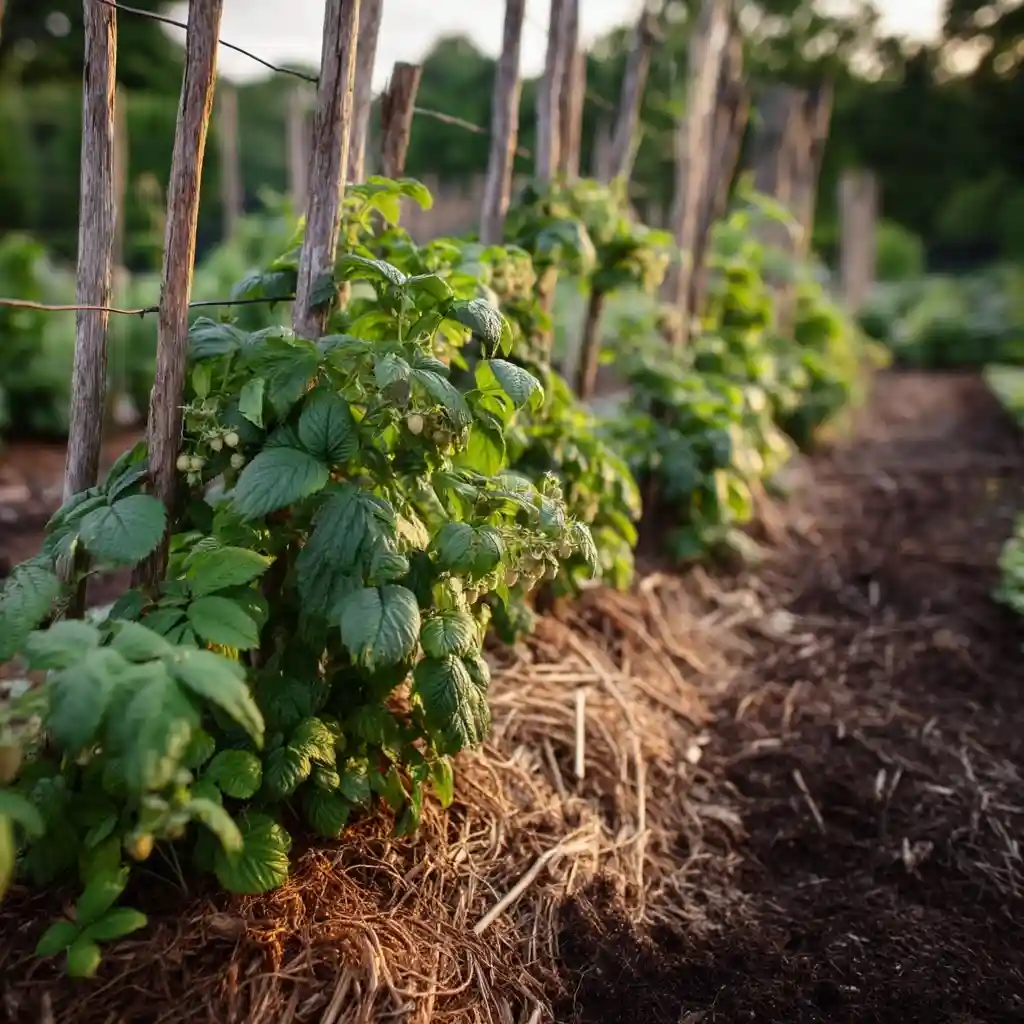
Even with the right raspberry companion plants, long-term success depends on how you manage your garden soil and overall plant health. These proven practices keep raspberry canes productive year after year.
Rotate Crops Regularly
Avoid planting raspberries in the same soil where nightshades or strawberries have grown in the past four years. Crop rotation helps reduce disease build-up and keeps the soil balanced.
Enrich Soil With Compost
Raspberries love nutrient-rich soil. Adding well-aged compost each season improves soil structure, feeds beneficial microbes, and supports steady cane growth.
Use Fungicides Carefully
Fungal issues like cane blight or leaf spot can weaken raspberries. If fungicides are necessary, apply them sparingly and according to guidelines to protect both the plants and surrounding beneficial organisms.
Maintain Good Airflow
Plant raspberry rows with enough space between canes for sunlight and airflow. This reduces the chances of fungal diseases and keeps berries drier after rain.
What Is Companion Planting?
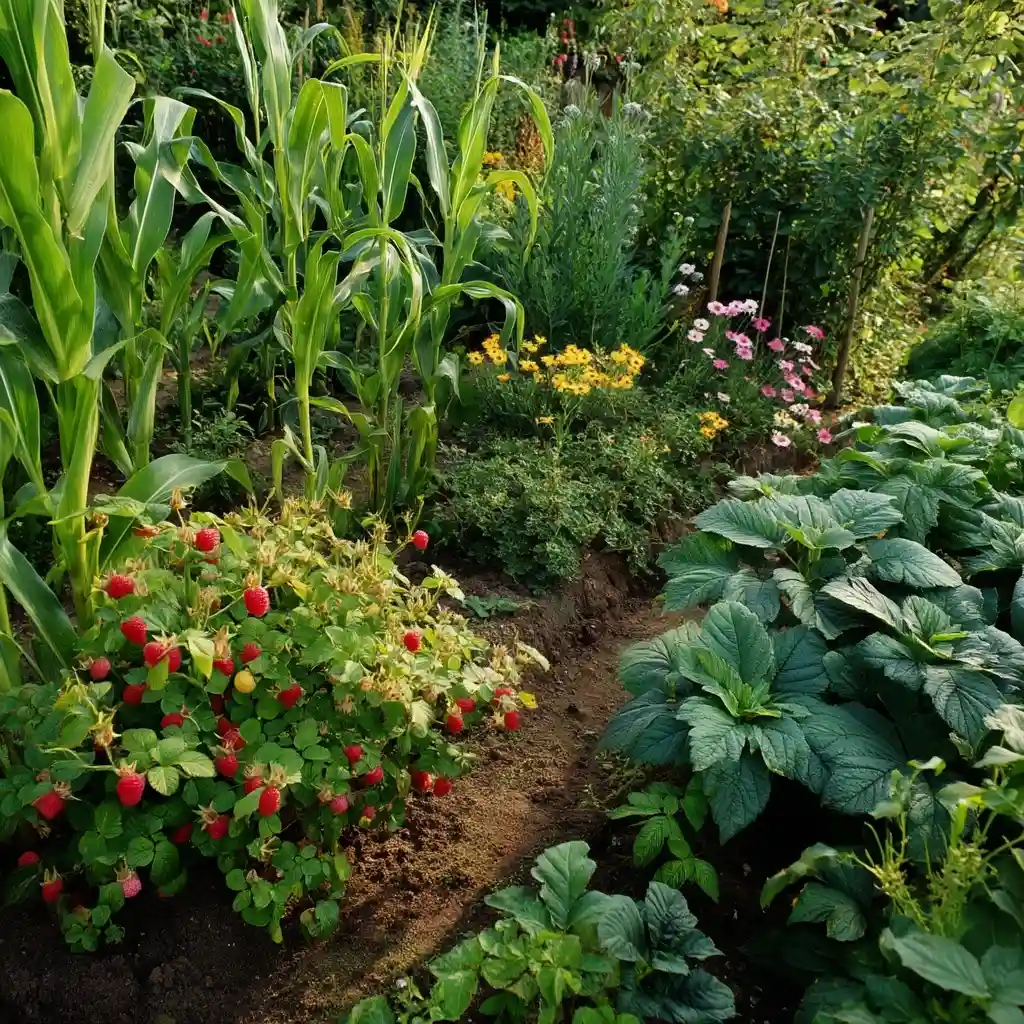
Companion planting is the age-old practice of growing different plants side by side for mutual benefit. Some combinations repel pests, while others attract pollinators or improve soil health. For raspberries, pairing them with the right companions leads to stronger canes, tastier fruit, and fewer problems with pests and disease.
A classic example of companion planting is the “three sisters” method. Corn, beans, and squash are planted together: corn provides a natural trellis for beans, beans fix nitrogen to feed the soil, and squash shades the ground to lock in moisture and suppress weeds.
While not every combination is backed by formal research, generations of gardeners have relied on companion planting to improve harvests. By using smart raspberry companion plants, you continue this tradition and create a healthier, more resilient garden ecosystem.
Conclusion
Choosing the right raspberry companion plants can make the difference between an average harvest and a thriving berry patch. From garlic and marigolds to cover crops that enrich the soil, the right companions strengthen your canes, attract pollinators, and protect against pests naturally. Just as important, avoiding poor companions like tomatoes, potatoes, and strawberries helps prevent diseases that could wipe out your crop. By combining thoughtful plant choices with good gardening practices, you’ll enjoy healthier raspberry bushes and a sweeter harvest year after year.
🌿 Love gardening inspiration? Follow me on Pinterest for bold plant ideas, tips, and seasonal color!
More Posts

